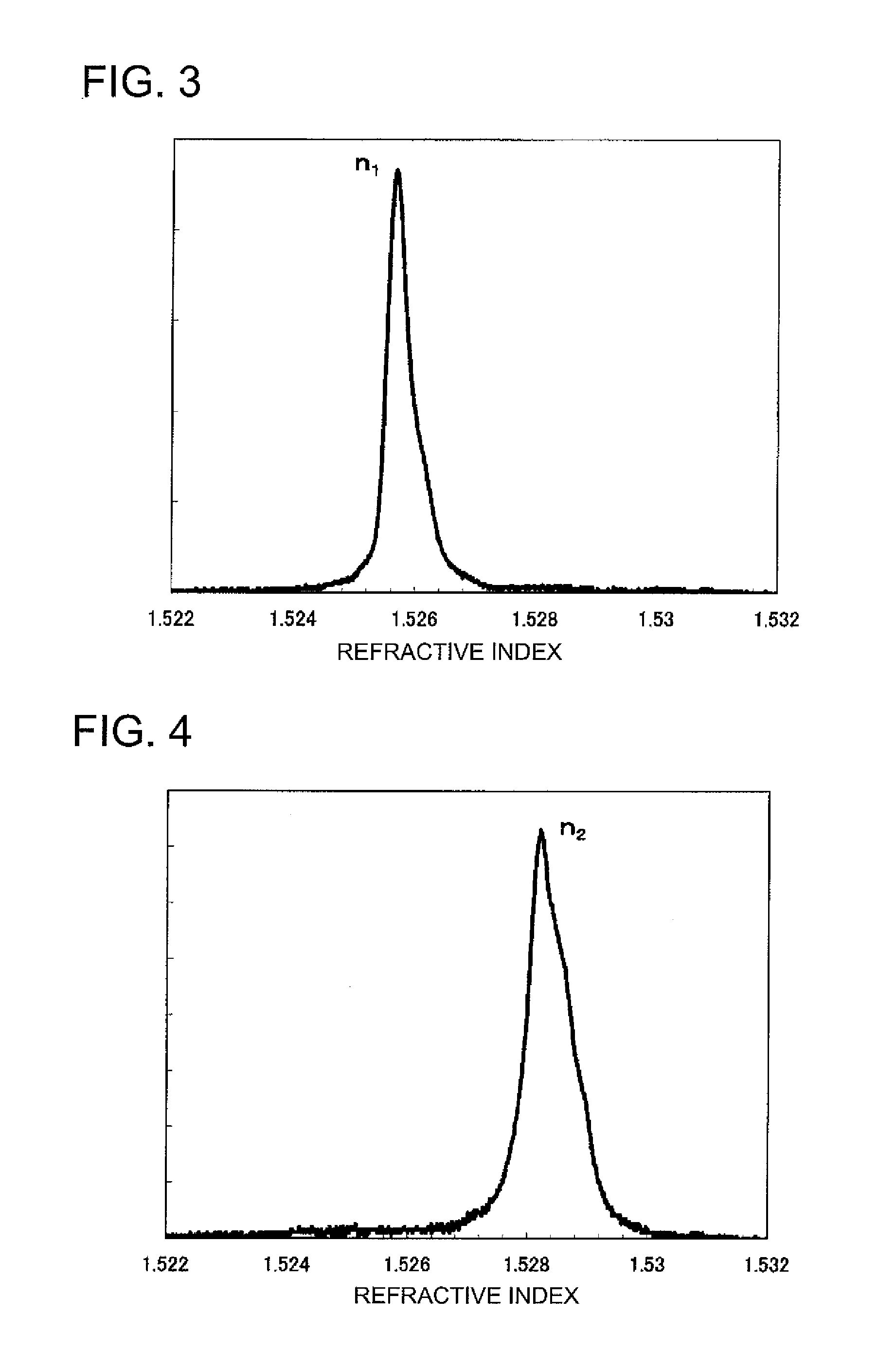Method for designing imaging lens, and imaging lens
a technology for imaging lenses and lenses, applied in the field of imaging lens design, can solve problems such as deterioration of optical performance, and achieve the effect of varying optical performan
- Summary
- Abstract
- Description
- Claims
- Application Information
AI Technical Summary
Benefits of technology
Problems solved by technology
Method used
Image
Examples
first example
[0068]Table 4 shows lens data provided by changing curvature radiuses of the surface closest to the object (the second surface) and the surface closest to the image (the fifth surface) in lens data of Comparative Example 2, as First Example. Thickness along the optical axis of each surface was assumed to be the same as that in Comparative Example 2. The surface shape of each of the third surface and the fourth surface was calculated by fitting with Expression 1 so as to satisfy the ratio “thickness of the surface portion”:“thickness of the center portion”:“thickness of the surface portion” is 1:1:1 at every optical axis height y based on surface shapes of the second surface and the fifth surface as a basis, similarly to Comparative Example 2. Generally, when refractive index of the inner layer is higher than that of the outer layer, the focal length becomes shorter. Therefore, it is preferable that the curvature radius of the optical surface is set to be gentle, but the scope of the...
second example
[0071]Table 5 shows lens data provided by changing surface distance between the image pickup lens and parallel flat plate in lens data of Comparative Example 2, as Second Example. Surface shapes of the image pickup lens was defined as the same as Comparative Example 2.
[0072]
TABLE 5f = 1.809 mm fB = 0.411 mm F = 3.29 2Y = 2.56 mmENTP = 0 mm EXTP = −2.26 mm H1 = −0.58 mm H2 = −1.4 mmEffective radiusSurface No.r(mm)D(mm)Ndνd(mm)1 (Stop)∞0.28000.2752*1.39990.35661.5256853.80.6043*3.07420.35661.5282053.80.6434*−15.03800.35661.5256853.80.6805*−2.19340.72620.7176∞0.30001.5168064.21.0677∞0.30001.155Aspheric surface coefficient2nd surface4th surfaceK =−7.3245e−01K =−2.4589e+03A4 =6.5940e−01A4 =3.0695e−01A6 =−3.9514e+00A6 =−7.2894e−01A8 =1.4404e+01A8 =3.9570e+00A10 =−2.5725e+01A10 =−8.0789e+00A12 =1.7685e+01A12 =6.1148e+003rd surface5th surfaceK =1.0658e+01K =−1.0533e+01A4 =4.6303e−01A4 =1.2419e−01A6 =−2.3631e+00A6 =6.6186e−01A8 =8.9265e+00A8 =−7.2198e−01A10 =−1.6361e+01A10 =1.0995e−01A12 =1....
third example
[0080]Table 8 shows lens data provided by changing curvature radiuses and thickness along the optical axis of the first lens and respective lens distances in data of Comparative Example 4, as Third Example. Surface shape and thickness along the optical axis of the second lens were assumed to be the same as those in Comparative Example 4.
[0081]
TABLE 8f = 1.334 mm fB = 0.262 mm F = 2.88 2Y = 1.76 mmENTP = 0 mm EXTP = −1.86 mm H1 = −0.5 mm H2 = −1.07 mmEffective radiusSurface No.r(mm)D(mm)Ndνd(mm)1 (Stop)∞0.13000.2322*1.76590.54891.5163064.10.3433*4.84820.23030.5014*0.66010.15671.5256853.80.6245*0.87290.15661.5282053.80.6446*1.28720.15671.5256853.80.6647*2.45680.31480.6858∞0.30001.5168064.20.7459∞0.20000.822Aspheric surface coefficient2nd surface5th surfaceK =3.1019e+00K =−4.5173e−01A4 =−1.8389e−02A4 =7.2881e−03A6 =−7.0515e+00A6 =−7.7992e−01A8 =4.0775e+01A8 =−1.6703e+00A10 =−8.5370e+01A10 =4.3742e+00A12 =−3.1382e+01A12 =2.5343e−01A14 =−1.2786e+013rd surface6th surfaceK =1.7691e+01K =1....
PUM
 Login to view more
Login to view more Abstract
Description
Claims
Application Information
 Login to view more
Login to view more - R&D Engineer
- R&D Manager
- IP Professional
- Industry Leading Data Capabilities
- Powerful AI technology
- Patent DNA Extraction
Browse by: Latest US Patents, China's latest patents, Technical Efficacy Thesaurus, Application Domain, Technology Topic.
© 2024 PatSnap. All rights reserved.Legal|Privacy policy|Modern Slavery Act Transparency Statement|Sitemap



